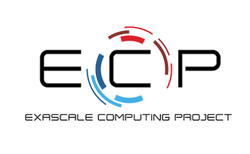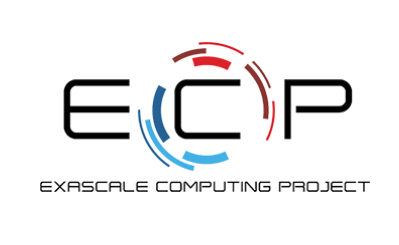
Sept. 13, 2016
By: Michael Feldman
Last week the US DOE awarded $39.8 million worth of funding for more than a dozen application development projects aimed at exascale computing. A total of 15 proposals were funded, with an additional 7 receiving seed funding. The awards represent the first significant sum of federal money directed at developing exascale applications in the US.
 The funding was announced by Exascale Computing Project (ECP), a DOE entity that drives the agency’s exascale efforts. ECP grew out of the cross-agency National Strategic Computing Initiative (NSCI), President Obama’s executive order to advance HPC R&D and deployment in the US. Up until now, much of one-year-old NSCI effort has involved organizational changes within federal agencies, announcements of cross collaborations, and planning for future actions.
The funding was announced by Exascale Computing Project (ECP), a DOE entity that drives the agency’s exascale efforts. ECP grew out of the cross-agency National Strategic Computing Initiative (NSCI), President Obama’s executive order to advance HPC R&D and deployment in the US. Up until now, much of one-year-old NSCI effort has involved organizational changes within federal agencies, announcements of cross collaborations, and planning for future actions.
Which is why the ECP awards for application projects is a welcome development. The US is on track to put its first exascale supercomputer in the field in 2023 or thereabouts, but the larger goal of the ECP is to develop a broad exascale ecosystem to drive progress in science, industry, healthcare, environmental stewardship, and national security. The application side of the exascale program is important, not only because it promises to advance work in specific areas of science and engineering, but also because it is a critical element of exascale co-design, the model being employed to develop these next-generation machines.
In fact, according to the press announcement, “a key consideration in the selection process was each team’s emphasis on co-design of the applications with the ECP’s ongoing development of hardware, software and computational capabilities, including physical models, algorithms, scalability and overall performance.”
Of the 15 application proposals funded (the full list is in press announcement), they split fairly evenly between those in basic and applied research. The basic research applications selected are mainly represented by simulations and modeling in areas like molecular dynamics, computational chemistry, fluid dynamics, nuclear physics, and cosmology. On the applied side, there is a more eclectic mix. Of these, there are a couple of interesting standouts: Exascale Deep Learning and Simulation Enabled Precision Medicine for Cancer, which is under the guidance of Rick Stevens at Argonne National Laboratory, and Transforming Additive Manufacturing through Exascale Simulation (TrAMEx), which is being led by John Turner at Oak Ridge National Laboratory.
The precision medicine/cancer application is especially ambitious in that it’s an attempt to build a deep neural network (DNN) for an exascale environment. In general, deep learning applications today, at least for training the neural networks, are run on medium-sized clusters, usually equipped with GPUs or some other form of accelerators. They are certainly terascale systems, but at this point, even scaling up to petascale computing would be considered something of a breakthrough. The focus of this application is a code known as CANDLE, which is short for CANcer Distributed Learning Environment. It will attempt to develop predictive models for cancer drugs as well as understand the molecular basis for the disease.
The TrAMEx application is associated with the lofty goal of making additive manufacturing a viable technology for industry. Essentially, additive manufacturing melds 3D printing with industrial manufacturing, which is why it is sometime called 3D manufacturing. As you might imagine, printing things like jet engines is liable to require a rather sophisticated machine, and the computational basis of its operation will hinge on the complexities of material sciences and industrial processes. Applying exascale resources to this problem could significantly advance manufacturing capabilities.
Curiously, the classic exascale application of brain simulation research was absent from the awards. Likewise, global climate research received a single award related to an application on cloud modeling and the water cycle. Presumably, these application areas and others will receive funding when and if additional ECP application awards are made.
